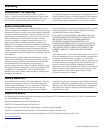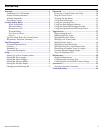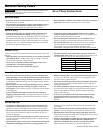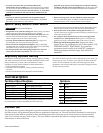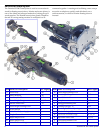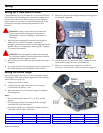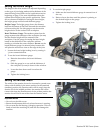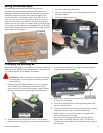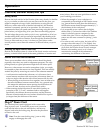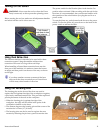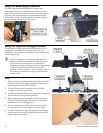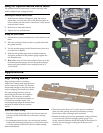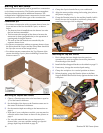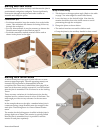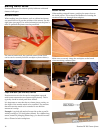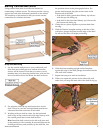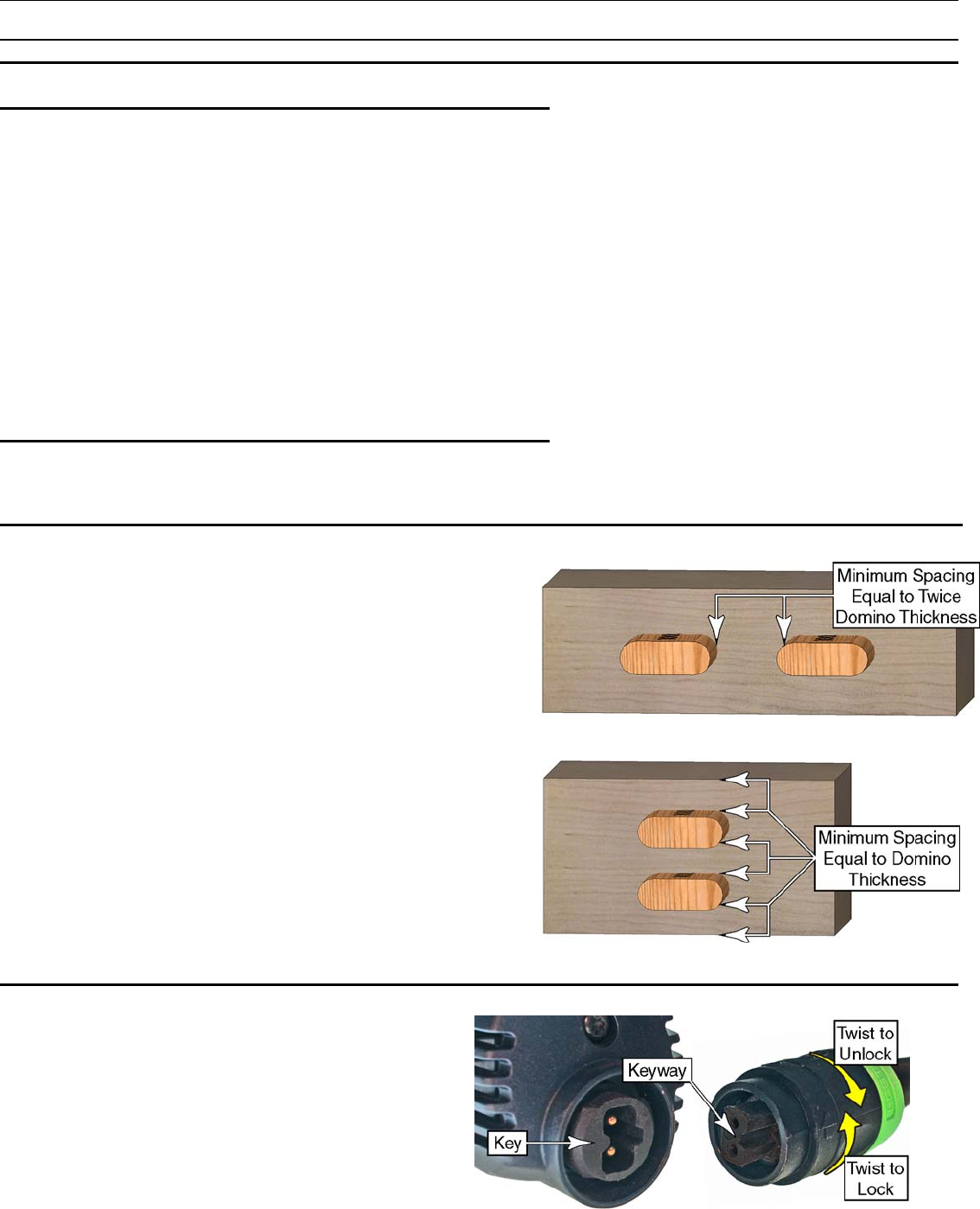
Operation
Overview, General Notes, and Tips
Getting Started
Because the look and feel of the Domino joiner may already be familiar
to you, or similar to other tools you may have used in the past, you
might be tempted to forego a basic introduction to using the tool.
However, unlike other tools of similar look and feel, the Domino
machine is extremely precise in its operation. For this reason, it is
recommended that you spend some time practicing using the Domino
joiner before you begin using it for your fine woodworking projects.
The old adage that practice makes perfect is very applicable to all of our
woodworking skills, and is even more important when dealing with
precision systems such as Domino. Even though the Domino machine
is easy to learn and easy to use, it is always a good idea to make
several practice cuts to learn the nuances of the tool before you put it
to use.
10 Domino DF 500 Tenon Joiner
Choosing the Right Domino Tenon Size
Because the Domino system is a form of the classic mortise and tenon
joinery, it should follow much of the same guidelines of mortise and
tenon joinery. Here are some guidelines to assist
you in making your choices:
► When the strength of your workpieces is
comparable to the strength of the Domino tenon
(e.g. general hard woods) then the thickness of
the Domino tenon should be approximately 1/3
the thickness of the workpieces.
► It is acceptable to use a tenon that is slightly
thicker than 1/3 when the width of the Domino
tenon is relatively narrow compared to the
width of the joint. This is why 8mm Domino
tenons are the most common for joining ¾-inch
lumber.
► For softer woods, such as pine, the joint will be
stronger when the tenon is 1/3 or slightly less.
► For plywoods, especially low-grade construction
plywoods, the Domino tenon is much stronger
than the surrounding wood, so it is best to
maximize the strength of the substrate by
minimizing the thickness of the tenon.
Domino Tenon Placement Guidelines
There are no steadfast rules on where tenons should be placed,
especially when they are used for alignment purposes. For edge
joining boards, a typical placement might be 6 to 8 inches apart.
However, when tenons are used to strengthen a joint, you might
be tempted to place the tenons too close together. This can actually
weaken the joint by removing too much of the substrate material.
► A wide mortise weakens the substrate, so it is better to have
several narrow mortises with uncut space in between, than it is
to have a single wide mortise with several tenons side-by-side.
► When placing several tenons close together, leave at least twice
the tenon thickness between mortise holes. As a general rule,
this means the minimum tenon spacing should be about 10
mm to 20 mm, but they can be spaced much wider.
► When creating stacked mortises for extra thick lumber, an
extension of the “1/3 rule” mentioned above still applies.
Specifically, the distance between mortises, and the distance
between a mortise and the wood surface should all be equal to
(or larger than) the thickness of the tenon.
Plug-It
®
Power Cord
The Domino joiner comes equipped with a removable
Plug-It power cord. To install the power cord, insert the
cord into the inlet on the tool with the key and keyway
aligned, and twist the locking ring. Reverse the procedure
to remove the cord.
Note: Turn the outer locking ri
ng ¼-turn to fully
engage or disengage the cord.



